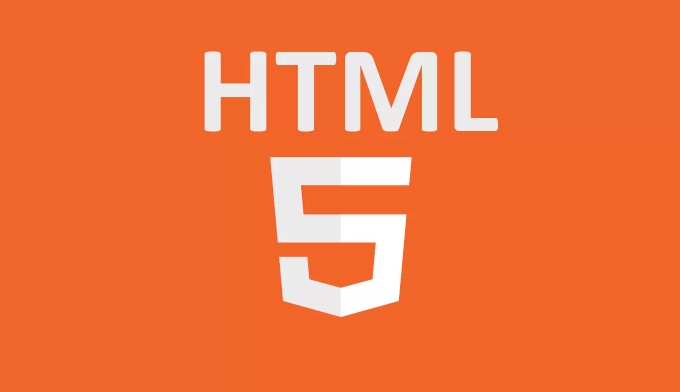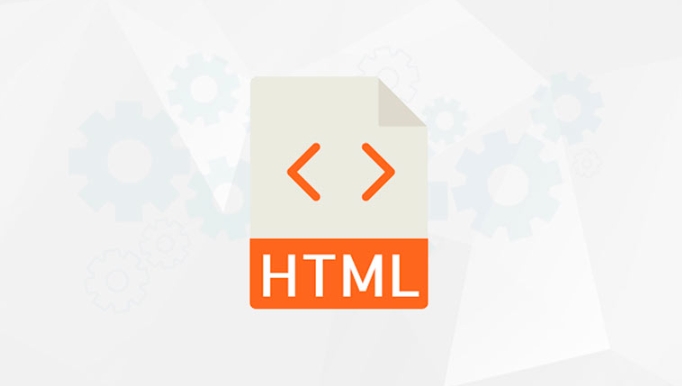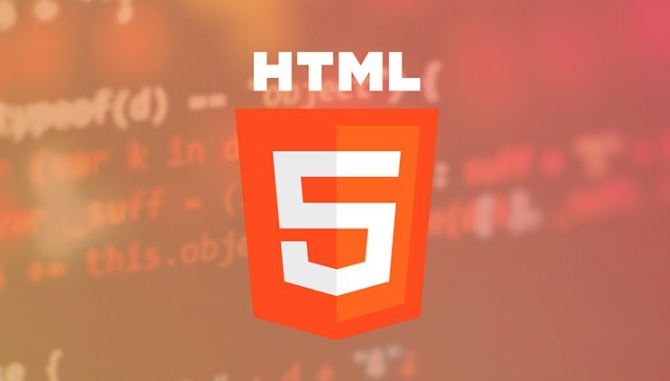The key to building email communications using HTML is compatibility and structural simplification. 1. Use table layout to replace Flexbox or Grid to ensure stable display in major mailbox clients; 2. All CSS styles need to be written inline to avoid relying on external style sheets; 3. Images should be clearly set width and add alternative text, and the buttons should be simulated with linked table cells; 4. It must be tested on multiple mailbox clients and devices, and use tools such as Litmus or Email on Acid to ensure consistent results. Following the above points can improve the compatibility and actual effect of HTML emails.

When doing email marketing, many people will directly think of using ready-made tools or platforms to design email content. But if you want higher levels of customization freedom, such as more precise control of typography, color, or responsive effects, using HTML to build email newsletters is a very practical option.

However, HTML performs well in web pages, which does not mean that it can be displayed normally in all mailbox clients. So the key point is: compatibility is preferred, simple structure, and inline style.

1. Use table layout instead of CSS Grid or Flexbox
Most modern web pages recommend using Flexbox or Grid for layout, but these technologies are not stable in HTML mail. Many mailbox clients (such as Outlook) have limited support for them.
Suggested practices:

- Use
<table> for overall layout<li> Tables can be nested, but not too complicated</li> <li> Each block uses <code><tr> and <code><td> to control the position<pre class='brush:php;toolbar:false;'> <table width="100%" cellpadding="0" cellpacing="0"> <tr> <td align="center"> <table width="600" cellpadding="20" cellpacing="0"> <tr> <td>This is the title area</td> </tr> <tr> <td>This is the main content</td> </tr> </table> </td> </tr> </table></pre><hr /><h3 id="Inline-CSS-styles-to-avoid-external-stylesheets"> 2. Inline CSS styles to avoid external stylesheets</h3><p> The mailbox client supports <code><style>tags and external CSS differently. To ensure that the style is applied correctly, the best way is to write CSS inside the tag.Operation skills:
- Use
styleattribute to define style - All fonts, colors, margins, etc. must be written on the label
- You can automatically convert CSS to inline using tools such as Mailchimp's Inline Styler
<td style="font-family: Arial, sans-serif; font-size: 16px; color: #333;"> This is a standard text. </td>
3. Pay attention to how pictures and buttons are processed
Although HTML mail supports images, some users will not load images by default. Therefore, when inserting the picture, add alternative text (alt text) and try not to let the picture bear the main information.
Suggestions about pictures:
- Image width is specified explicitly (for example
width="300") - Add
alt="How to use HTML for building email newsletters?" - Don't use background images, use the
Button processing method:
- Don't use
<button>, because many clients do not support it - Simulate buttons with links table cells
<table cellpadding="0" cellpacing="0"> <tr> <td bgcolor="#007BFF" style="padding: 12px 24px; border-radius: 4px;"> <a href="#" style="color: #fff; text-decoration: none; font-weight: bold;">Click here</a> </td> </tr> </table>
4. Test and test again
Even if you write HTML mail in accordance with best practices, you must test it on multiple mailbox clients (Gmail, Outlook, Apple Mail, etc.) and on devices.
Test suggestions:
- Use professional tools like Litmus or Email on Acid
- Send it to yourself to preview different email accounts
- Check whether there are any problems such as misalignment, font exceptions, and pictures not loading
Basically that's it. HTML mail development is not as modern as web pages, but it is still very effective as long as you pay more attention to structure, style, and compatibility.
- Use
The above is the detailed content of How to use HTML for building email newsletters?. For more information, please follow other related articles on the PHP Chinese website!

Hot AI Tools

Undress AI Tool
Undress images for free

Undresser.AI Undress
AI-powered app for creating realistic nude photos

AI Clothes Remover
Online AI tool for removing clothes from photos.

Clothoff.io
AI clothes remover

Video Face Swap
Swap faces in any video effortlessly with our completely free AI face swap tool!

Hot Article

Hot Tools

Notepad++7.3.1
Easy-to-use and free code editor

SublimeText3 Chinese version
Chinese version, very easy to use

Zend Studio 13.0.1
Powerful PHP integrated development environment

Dreamweaver CS6
Visual web development tools

SublimeText3 Mac version
God-level code editing software (SublimeText3)

Hot Topics
 Explain the purpose of the role attribute in ARIA.
Jun 14, 2025 am 12:35 AM
Explain the purpose of the role attribute in ARIA.
Jun 14, 2025 am 12:35 AM
ARIA's role attribute is used to define the role of web elements and improve accessibility. 1. Role attribute helps assistive technology to understand the functions of elements, such as buttons, navigation, etc. 2. Use role attributes to assign specific roles to non-semantic HTML elements. 3. The role attribute should be consistent with the element behavior and be verified by the accessibility tool test.
 HTML and Design: Creating the Visual Layout of Websites
Jun 14, 2025 am 12:39 AM
HTML and Design: Creating the Visual Layout of Websites
Jun 14, 2025 am 12:39 AM
How to create a website layout? 1. Use HTML tags to define the content structure, such as, ,. 2. Control styles and positions through CSS, using box model, float or Flexbox layout. 3. Optimize performance, reduce HTTP requests, use cache and optimize images, and ensure responsive design.
 How do I stay up-to-date with the latest HTML standards and best practices?
Jun 20, 2025 am 08:33 AM
How do I stay up-to-date with the latest HTML standards and best practices?
Jun 20, 2025 am 08:33 AM
The key to keep up with HTML standards and best practices is to do it intentionally rather than follow it blindly. First, follow the summary or update logs of official sources such as WHATWG and W3C, understand new tags (such as) and attributes, and use them as references to solve difficult problems; second, subscribe to trusted web development newsletters and blogs, spend 10-15 minutes a week to browse updates, focus on actual use cases rather than just collecting articles; second, use developer tools and linters such as HTMLHint to optimize the code structure through instant feedback; finally, interact with the developer community, share experiences and learn other people's practical skills, so as to continuously improve HTML skills.
 How do I use the element to represent the main content of a document?
Jun 19, 2025 pm 11:09 PM
How do I use the element to represent the main content of a document?
Jun 19, 2025 pm 11:09 PM
The reason for using tags is to improve the semantic structure and accessibility of web pages, make it easier for screen readers and search engines to understand page content, and allow users to quickly jump to core content. Here are the key points: 1. Each page should contain only one element; 2. It should not include content that is repeated across pages (such as sidebars or footers); 3. It can be used in conjunction with ARIA properties to enhance accessibility. Usually located after and before, it is used to wrap unique page content, such as articles, forms or product details, and should be avoided in, or in; to improve accessibility, aria-labeledby or aria-label can be used to clearly identify parts.
 How do I create a basic HTML document?
Jun 19, 2025 pm 11:01 PM
How do I create a basic HTML document?
Jun 19, 2025 pm 11:01 PM
To create a basic HTML document, you first need to understand its basic structure and write code in a standard format. 1. Use the declaration document type at the beginning; 2. Use the tag to wrap the entire content; 3. Include and two main parts in it, which are used to store metadata such as titles, style sheet links, etc., and include user-visible content such as titles, paragraphs, pictures and links; 4. Save the file in .html format and open the viewing effect in the browser; 5. Then you can gradually add more elements to enrich the page content. Follow these steps to quickly build a basic web page.
 What is an HTML tag?
Jun 13, 2025 am 12:36 AM
What is an HTML tag?
Jun 13, 2025 am 12:36 AM
HTMLtagsareessentialforstructuringwebpages.Theydefinecontentandlayoutusinganglebrackets,ofteninpairslikeand,withsomebeingself-closinglike.HTMLtagsarecrucialforcreatingstructured,accessible,andSEO-friendlywebpages.
 How do I create checkboxes in HTML using the element?
Jun 19, 2025 pm 11:41 PM
How do I create checkboxes in HTML using the element?
Jun 19, 2025 pm 11:41 PM
To create an HTML checkbox, use the type attribute to set the element of the checkbox. 1. The basic structure includes id, name and label tags to ensure that clicking text can switch options; 2. Multiple related check boxes should use the same name but different values, and wrap them with fieldset to improve accessibility; 3. Hide native controls when customizing styles and use CSS to design alternative elements while maintaining the complete functions; 4. Ensure availability, pair labels, support keyboard navigation, and avoid relying on only visual prompts. The above steps can help developers correctly implement checkbox components that have both functional and aesthetics.
 How do I minimize the size of HTML files?
Jun 24, 2025 am 12:53 AM
How do I minimize the size of HTML files?
Jun 24, 2025 am 12:53 AM
To reduce the size of HTML files, you need to clean up redundant code, compress content, and optimize structure. 1. Delete unused tags, comments and extra blanks to reduce volume; 2. Move inline CSS and JavaScript to external files and merge multiple scripts or style blocks; 3. Simplify label syntax without affecting parsing, such as omitting optional closed tags or using short attributes; 4. After cleaning, enable server-side compression technologies such as Gzip or Brotli to further reduce the transmission volume. These steps can significantly improve page loading performance without sacrificing functionality.






